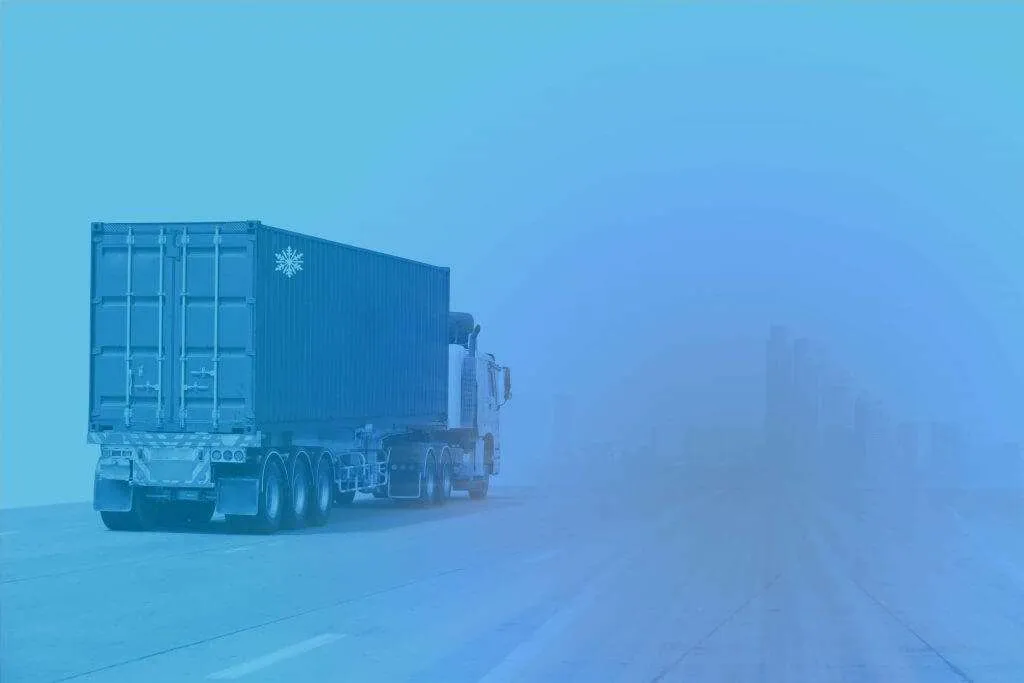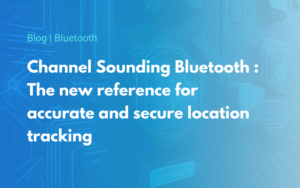Avoiding breaks in the cold chain when transporting goods
Reading time
Level

Compliance with the cold chain when transporting goods is essential. If the cold chain for heat-sensitive products is broken, the carrier is liable. Monitoring and controlling temperatures is therefore a major health and economic issue.
So how do you get accurate data on how to maintain the ambient temperature inside a refrigerated vehicle for example?
Temperature sensors provide reliable data to address these traceability issues, from transport to storage and delivery to the customer. How can you ensure that the cold chain is not broken? That’s what we’re going to explain in this article.
What is a break in the cold chain?
A break in the cold chain can be defined as the consequence of a rise in temperature beyond that prescribed. To avoid this, the aim is to put in place a set of operations designed to maintain a constant, and usually negative, temperature during the storage and transport of a heat-sensitive product.
A heat-sensitive product is one that is sensitive to temperature variations. In other words, its properties change depending on whether it is cold or hot. Respecting the cold chain means ensuring the consistency of the product or merchandise, in accordance with its labelling or the regulations in force.
Why is it essential to respect the cold chain?
Compliance with the cold chain is therefore essential when transporting heat-sensitive goods. The safety of these specific products must be guaranteed by the transport company.
If they are delivered at a temperature higher than the contractually agreed one for example, the carrier can be held liable for it. The customer may then refuse delivery, even in the absence of alteration of the goods or its bacteriological conformity.
What are the consequences of breaking the cold chain in the transport sector?
Temperature-controlled transport, whether by air, land or sea, is naturally a source of disputes because of the risks involved. Different health or financial issues are then to be considered.
Health risk
When you think of the health risks associated with breaking the cold chain, you naturally think of the risks of food poisoning (staphylococcus, salmonella or listeriosis). In fact, the cold stops the proliferation of micro-organisms to keep food safe.
This is also the case for many pharmaceutical products, such as drugs or vaccines, that need to be preserved cold. Some heat-sensitive health products can also be to damage caused by freezing. The crystallization of a water-soluble drug, for example, is irreversible.
Economic risk
The financial risk is therefore very real. Because, as we have seen, a customer can refuse delivery of a batch of goods on the grounds that the cold chain has been broken during transport. Case law considers that temperature non-conformity can constitute damage.
In case of doubt about the continuity of the cold chain, the consequence is the outright destruction of the goods. The principal may sue the transport company and claim compensation for damages. All of this is possible even in the absence of physical alteration of the product.
A regulatory framework governs market participant. You can therefore better prevent by taking certain precautions.
What should be checked in the cold chain?
Bringing your company into compliance with the regulation in force is an important issue for many players in cold logistics. The use of a capture solution, especially wireless, may be essential.
Cold chain regulation in transport and EN12830 and EN13486 standards
The use of temperature sensors is thus required by European regulations to obtain the EN12830 standard as well as the EN13486 standard.
- Standard EN 12830 specifies the functional and technical characteristics of the various systems for measuring and recording temperature during transport, storage and distribution. The aim is to ensure that temperatures are properly maintained and recorded throughout the process.
- The EN13486 standard supplements the previous one by also being more specific to frozen, chilled or deep-frozen food products. The aim is to introduce a procedure for checking transport equipment such as measuring thermometers and recorders.
To find out everything you need to know about current standards and cold chain regulations, read our article.
What are the critical phases that can cause a cold chain breakage?
Apart from transport, 3 other phases in the logistics chain are particularly prone to cold chain malfunction:
- Loading goods: loading and unloading are sensitive operations that need to be carried out as quickly as possible.
- Storage and warehousing: ideally, the storage area should be monitored to ensure that temperature conditions are respected.
- Distribution: distribution is another link in the cold chain. In sales outlets or cold rooms, products must be kept at the right temperature.
It should be recalled that the carrier is responsible for the condition inside the transport vehicle, according to the instructions of the instructing party or the indications transmitted on the transport document.
How can you prevent a break in the cold chain when transporting goods?
Effective solutions exist to avoid breaking the cold chain in the transport sector.
Real-time temperature monitoring thanks to IoT solutions
IoT (Internet of Things) solutions enable remote temperature monitoring using connected temperature sensors.
For example, by using Bluetooth sensors embedded in the trailers of refrigerated lorries, it is possible to monitor the storage temperature of goods in real time.
The temperature recorders will communicate via Bluetooth with the telematics box in the driver’s cab. As the box is multi-connectivity (Bluetooth, GPS, 3G/4G cellular), it will be able to send information and temperature history back to the customer’s server.
If a temperature threshold is exceeded, an SMS, email or even voice alert is sent directly to the driver’s smartphone, enabling him to react very quickly.

Temperature monitoring solution for the transport of pharmaceutical products
Read about Chrono Transexpress, equipped by our partner SUD Télématique
How can you avoid breaking the cold chain?
In addition to IoT solutions, staff training is essential to ensure that the cold chain is respected. Educating drivers and logistics operators about good practices for handling and storing temperature-sensitive products helps to prevent human errors that could compromise the temperature of goods. Optimising transport routes also plays a key role: by planning efficient routes and reducing waiting times, the risks of exposure to inappropriate temperatures are reduced. The use of suitable containers and equipment, such as well-maintained refrigerated lorries and temperature control devices, also helps to maintain ideal conditions throughout the journey. Finally, the implementation of regular verification procedures and internal audits enables any faults in the system to be identified and corrected quickly.
Bluetooth temperature sensors
There are many temperature sensors on the market. However, to comply with regulations, they must meet a number of criteria, such as the EN12830 and EN13486 standards discussed earlier in this article. It is therefore important to ensure that the sensor is certified by a government body such as COFRAC or Dakks in Germany, for example.
The Bluetooth temperature sensors used in this type of solution must, among other things, offer very high accuracy, particularly when transporting frozen food or pharmaceutical products.As all measuring equipment loses accuracy with use, it is the user’s responsibility to have it checked and calibrated regularly.
The choice of sensor can also be based on the measurement range it offers.For example, the Blue PUCK T EN12830 offers a wide measurement range from -40° to +85°C, covering most applications.

Discover our Bluetooth temperature sensor
in compliance with regulations
The digitisation of the sector meets the need for reliable information and data security for logisticians and transporters. ELA Innovation will naturally support you in this digital transition, thanks to its ecosystem of partners who can offer you solutions tailored to your business sector.


